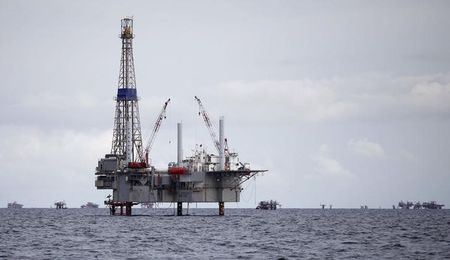Commodities
Oil prices fall as Tropical Storm Beryl nears landfall in Texas

Investing.com– Oil prices retreated Monday, handing back some of the gains seen over the last four weeks, as traders watched for the impact of tropical storm Beryl on oil production in the Gulf of Mexico.
At 08:25 (12:25 GMT), fell 0.5% to $86.11 a barrel, while dropped 0.7% to $82.61 a barrel.
Despite these losses, both contracts remained close to recent two-month highs after four straight weeks of strong gains amid expectations of higher summer demand, with recent gains also being driven by concerns over weather-related supply disruptions.
But fears of slowing economic growth and softer demand in top importer China somewhat tempered recent gains in oil.
Tropical storm Beryl approaches Texas
The largest ports in Texas have closed operations and blocked traffic over the weekend to prepare for tropical storm Beyl, which is set to strengthen back into a hurricane before making landfall.
The storm is expected to pass through the biggest oil exporting regions in the state, with port closures presenting potential delays in oil shipments.
Initial expectations had been for Beryl to have a negligible impact on production. But the storm unexpectedly remained strong after leaving a trail of devastation through Jamaica.
The Gulf of Mexico is a key oil producing region for North America, and faces production disruptions every year during the summer storm season.
Travel demand, geopolitical risks keep oil underpinned
U.S. travel demand was seen hitting record highs during the Independence Day holiday last week. A large drawdown in U.S. also ramped up bets on stronger summer demand, keeping oil prices largely underpinned.
Additionally, persistent geopolitical unrest in the Middle East also saw traders keep a risk premium largely priced into oil prices.
That said, talks over a U.S. ceasefire plan to end the nine-month-old war in Gaza are under way and being mediated by Qatar and Egypt.
A ceasefire would potentially see a risk premium being removed from the crude market.
Exxon Mobil (NYSE:) to receive earnings boost from crude
Exxon Mobil said on Monday changes in oil prices would increase the company’s second-quarter upstream earnings by $300 million to $700 million compared with the first quarter.
The oil major would be reporting its first earnings after closing the acquisition of Pioneer Natural Resources for $60 billion, with the combined operations making it the largest oil producer in the Permian basin.
Exxon, however, said it expects changes in gas prices to decrease its quarterly upstream earnings by $300 million to $700 million compared with the first quarter.
The largest U.S. oil producer had posted $5.7 billion in upstream earnings for the first quarter ended March 31.
(Ambar Warrick contributed to this article.)
Commodities
Oil prices rise; U.S. crude inventories plunge, Russia-Ukraine truce eyed
Commodities
India’s Reliance to stop buying Venezuelan oil over US tariffs, sources say
Commodities
Oil prices climb on Venezuela supply worries

 Forex3 years ago
Forex3 years agoForex Today: the dollar is gaining strength amid gloomy sentiment at the start of the Fed’s week

 Forex3 years ago
Forex3 years agoUnbiased review of Pocket Option broker

 Forex3 years ago
Forex3 years agoDollar to pound sterling exchange rate today: Pound plummeted to its lowest since 1985

 Forex3 years ago
Forex3 years agoHow is the Australian dollar doing today?

 Cryptocurrency3 years ago
Cryptocurrency3 years agoWhat happened in the crypto market – current events today

 World3 years ago
World3 years agoWhy are modern video games an art form?

 Commodities3 years ago
Commodities3 years agoCopper continues to fall in price on expectations of lower demand in China

 Economy3 years ago
Economy3 years agoCrude oil tankers double in price due to EU anti-Russian sanctions























